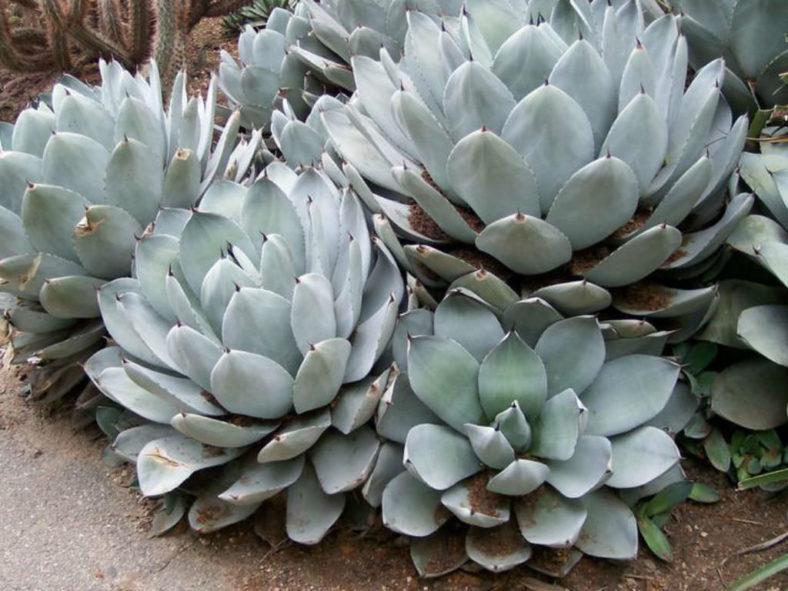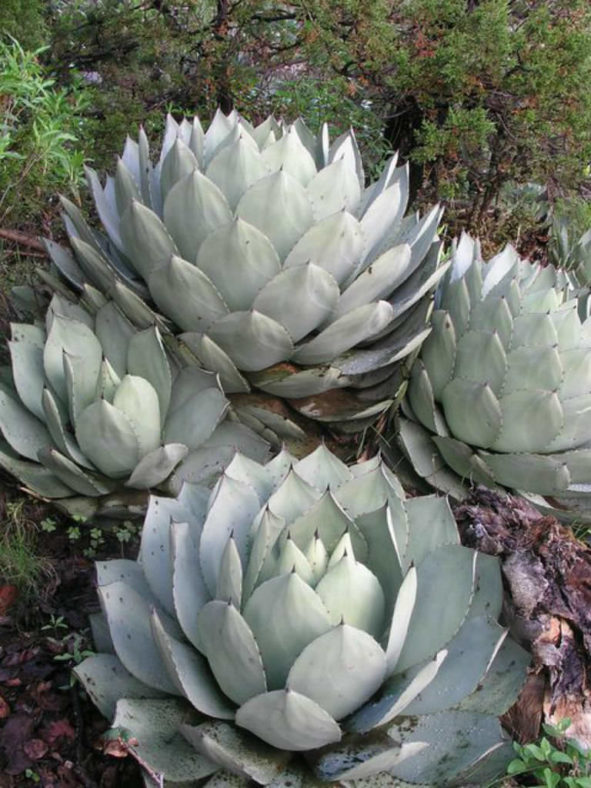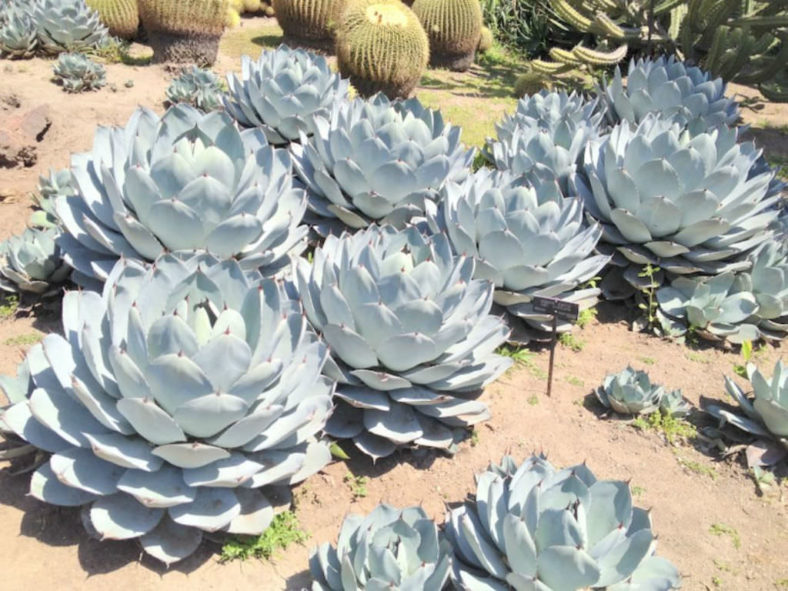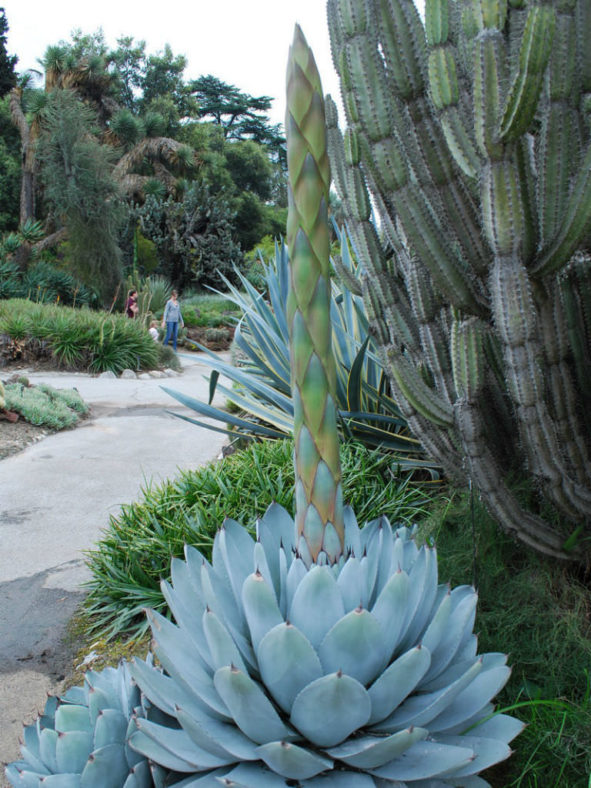Scientific Name
Agave parryi var. truncata Gentry
Common Name(s)
Artichoke Agave
Scientific Classification
Family: Asparagaceae
Subfamily: Agavoideae
Genus: Agave
Origin
Agave parryi var. truncata is native to Mexico. It occurs in southern Chihuahua and northern Durango.
Description
Agave parryi var. truncata is a beautiful succulent that forms compact rosettes of broad, round, blue-gray leaves with reddish-brown teeth along the margins and a terminal spine. This variety has more compact rosettes than Agave parryi var. parryi. The rosettes are somewhat reminiscent of an artichoke, hence the common name. The leaves are thick and fleshy and can grow up to 12 inches (25 cm) long and up to 4.8 inches (12 cm) broad.
The mature rosettes produce a magnificent flowering spike reaching 15 feet (5 m) in height and bearing dense clusters of orange buds that open to yellow flowers. The rosette dies after flowering, but new rosettes formed by offsets will root at the base of the mother rosette.

Hardiness
USDA hardiness zone 8a to 11b: from 10 °F (−12.2 °C) to 50 °F (+10 °C).
How to Grow and Care
Agave is not a difficult plant to grow. They're slow-growing and dramatic and will even thrive on a bit of neglect. If you're the type of person who likes to fuss with houseplants and water a lot, Agave is probably not the plant for you. However, if you like to set it and forget it, and you have a sunny window, Agave might be the way to go. Be aware that some large varieties will eventually outgrow your room (unless you have a large greenhouse), and Agave can be aggressive. They have irritating sap and sometimes very sharp thorns that can cause injuries to small children and even pets.
In general, Agaves do not need to be repotted every year. Most species commonly found in cultivation grow slowly and take a long to outgrow their pot. It's also best to handle your Agave as little as possible since they do not like being disturbed.
See more at How to Grow and Care for Agave.
Cultivars
Links
- Back to genus Agave
- Succupedia: Browse succulents by Scientific Name, Common Name, Genus, Family, USDA Hardiness Zone, Origin, or cacti by Genus
Photo Gallery
Click on a photo to see a larger version.


